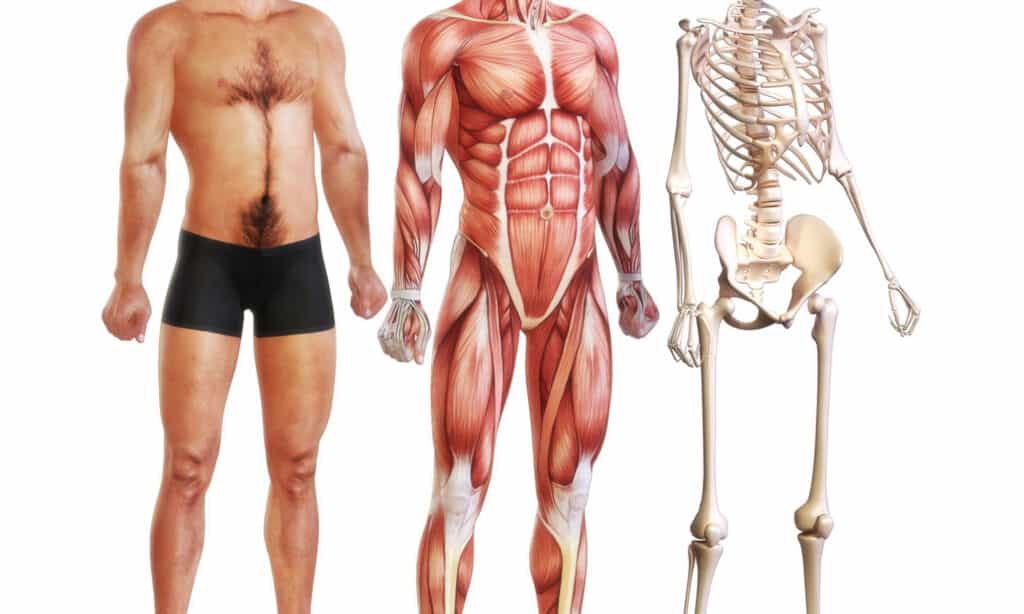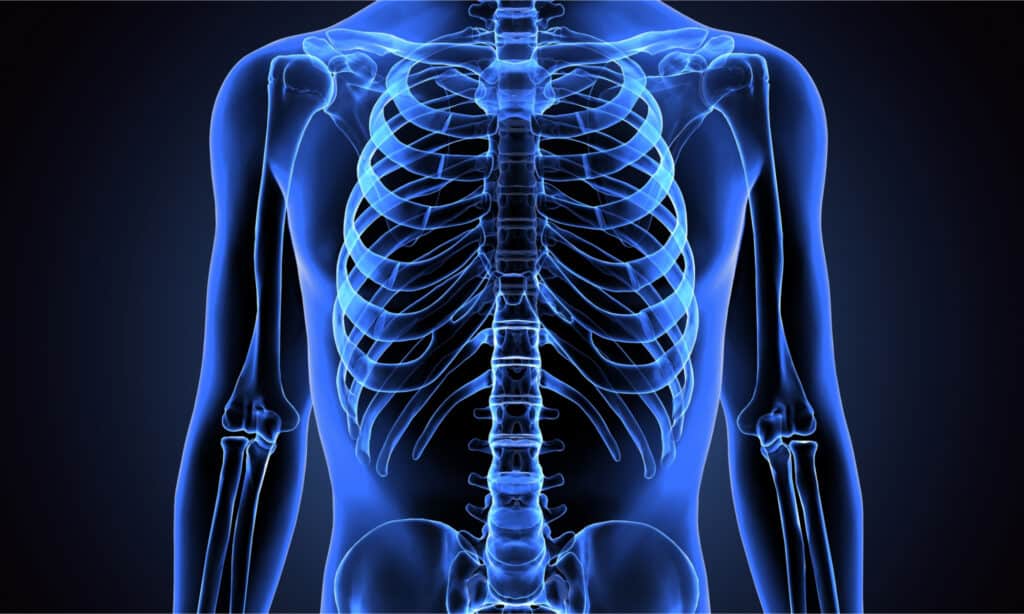As an embodiment of perfect creation, the human body has been a fascinating topic to discuss since time immemorial. With its myriad integrated units, it is hardly surprising that many questions still revolve around its morphology, functionalities, repair, and capacity, even at present. The human body certainly contains many secrets yet to be unraveled, and in this article, we will be taking a look at the number of bones in the human body.
The Relationship Between the Skeletal System and the Human Body

The human skeleton gives the body shape and protects internal organs.
©Digital Storm/Shutterstock.com
Like in building construction, where the pillars and the structural foundation stand as frameworks to support part of a solid vertical structure, the human skeleton performs the same function as it gives the body shape, protects internal organs, and keeps the entire body erect against collapsing.
The skeleton is a combination of concisely organized bones forming an internal framework. So how many bones are there in the human body? However, a baby’s body comprises 300 bones at birth. Intriguingly, these numbers decrease, and certain bones begin to fuse as one advances in age and body size.
How Many Bones are in the Human Body?

There are 206 bones present in the human body.
©SpicyTruffel/Shutterstock.com
Generally, from the longest to the smallest, there are distinctively 206 bones in the human adult body serving invaluable purposes. They are formed with connective tissues, calcium, and other important bone cells (osteoblasts, osteoclasts, osteocytes, and bone lining cells).
How Can You Keep the Human Bone Healthy?
Now you know the answer to the question, “how many bones are in the human body?”, it’s time to take a look at how to keep them healthy. In general, the human body needs the utmost care, exercise, and the right nutrition for sustenance and development. Interestingly, even the professional nutritionists and doctors, whose jobs are to give valuable tips concerning healthy living, suggest that humans include the right proportion of calcium in their diets because it is a vital nutrient for bone formation. Since the bones require sufficient calcium for optimal formation, it is wise to follow the daily recommended dietary allowance (RDA) of 1.1 tons for adults between 19 to 50 and men aged 51 to 70.
Moreover, one should adequately take vitamin D foods (fatty fish, like tuna, mackerel, and salmon), some dairy products, orange juice, soy milk, cereals, beef liver, cheese, and egg yolks judiciously. Sadly, if not taken care of, the bones may suffer any of these:
- Osteoporosis – a health condition that weakens bones, making them fragile and more likely to break.
- Fractures
- Osteitis – bone inflammation
- Acromegaly – controlled by the pituitary gland, acromegaly is a hormonal disorder that produces too much growth hormone in adulthood and consequently increases the size of the bone.
- Rickets – a bone development issue mostly experienced in childhood. It sadly comes with excruciating pain and slow development.
- Bone cancer
What is the Study of Bones Called?
Osteology is the study of bones. Most of what we know today about the human skeletal system can be credited to osteologists’ selfless and stern efforts. As a subdiscipline of anatomy, osteology is the study of the structure of bones, skeletal elements, teeth, micro bone morphology, the process of ossification, and biophysics.
The word Osteology was coined from two Greek words, ὀστέον (ostéon), meaning – ‘bones,’ and λόγος (logos), meaning – ‘study .’This prestigious field cuts across other medical disciplines like anthropology, anatomy, and paleontology while constantly revolutionizing the medical approach to solving related bone issues.
Parts of the Human Skeleton

©Life science/Shutterstock.com
Reiterating one of the points above, the adult human skeleton comprises 206 fully formed bones. With so many amazing functions bordering this rigid internal framework, one would be curious to learn more about the following parts of the skeleton:
- Human skull: The human skull sits at the top of the list of the human skeletal system. It serves as the skeletal frame of the head. It comprises cartilage and bone tissues that collaboratively protect the brain and other sense organs located within the skull.
- Spine: The human spine helps us in sitting, walking, standing, bending, and twisting. The backbone, also referred to as the spine, has 33 bones with five sections, including the thoracic lumbar, cervical, sacrum, and coccyx bone.
- Arms: These two long parts of the upper human body are made up of the collarbone, radius, humerus, ulna, and wrist.
- Chest: The chest protects vital organs like the heart, liver, and lungs. It consists of the ribs, and the sternum, which alongside other structural formations, collaboratively support the movement of the upper arms and shoulder girdle.
Others include; the pelvis, legs, hands, and feet.
Classification of Bones
The human bone is categorically classified into four types – this includes the flat bone, asymmetrical bone, the long bone, and the short bone.
Flat bones – These bones are usually identifiable with their broad surfaces. Some distinct examples include breast bones and skull bones.
Asymmetrical bones – These bones are also referred to as irregular bones. Examples include palatine, vertebrae, mandible, inferior nasal concha, zygomatic coccyx, hyoid, sphenoid, ethmoid, maxilla, sacrum, and temporal.
Long bones – These include the bones in the legs and arms; however, ankles, wrists, and kneecaps are not categorized as long bones.
Short bone – Examples of short bones will include the carpals in the wrist (scaphoid, lunate, triquetral, hamate, pisiform, capitate, trapezoid, and trapezium) and the tarsals in the ankles (calcaneus, talus, navicular, cuboid, lateral cuneiform, intermediate cuneiform, and medial cuneiform).
Fun Facts about the Femur and Stapes of the Human Body
There is an unending array of fun facts about the human body, and the femur and stapes fall here.
Femur – Located in the thigh, the femur appears to be the longest bone in the human body, with an adult length measuring between 16 – 19 inches.
Stapes – This invaluable bone is the smallest in the human body. It takes third place in the trio order of bones in the middle ear and measures around 0.04 inches.
The photo featured at the top of this post is © Life science/Shutterstock.com
Thank you for reading! Have some feedback for us? Contact the AZ Animals editorial team.






